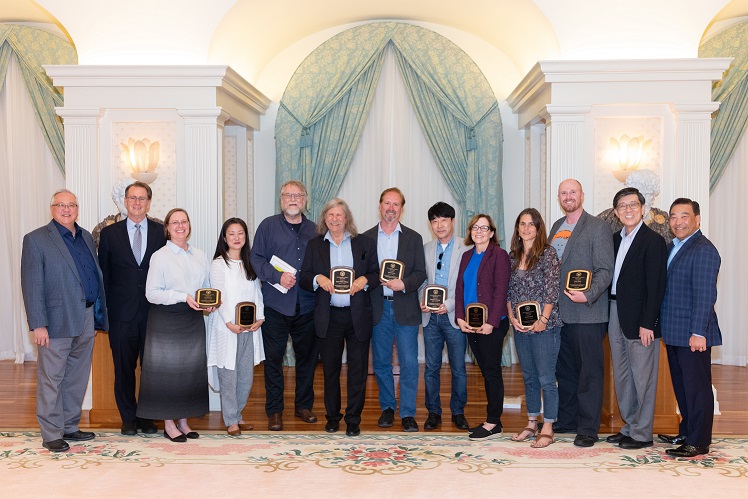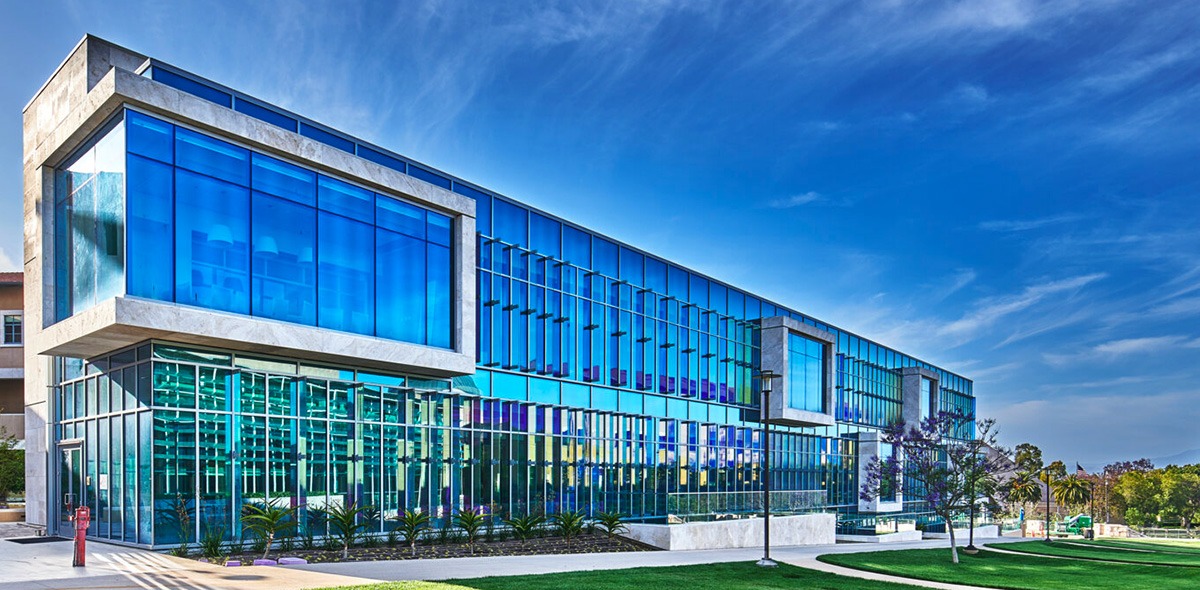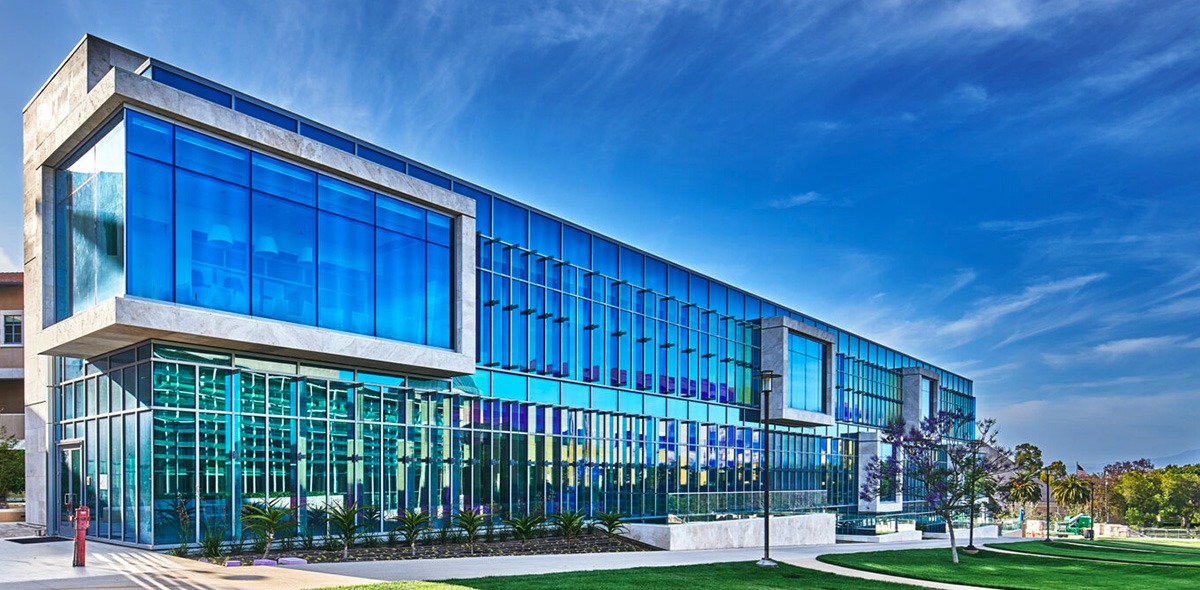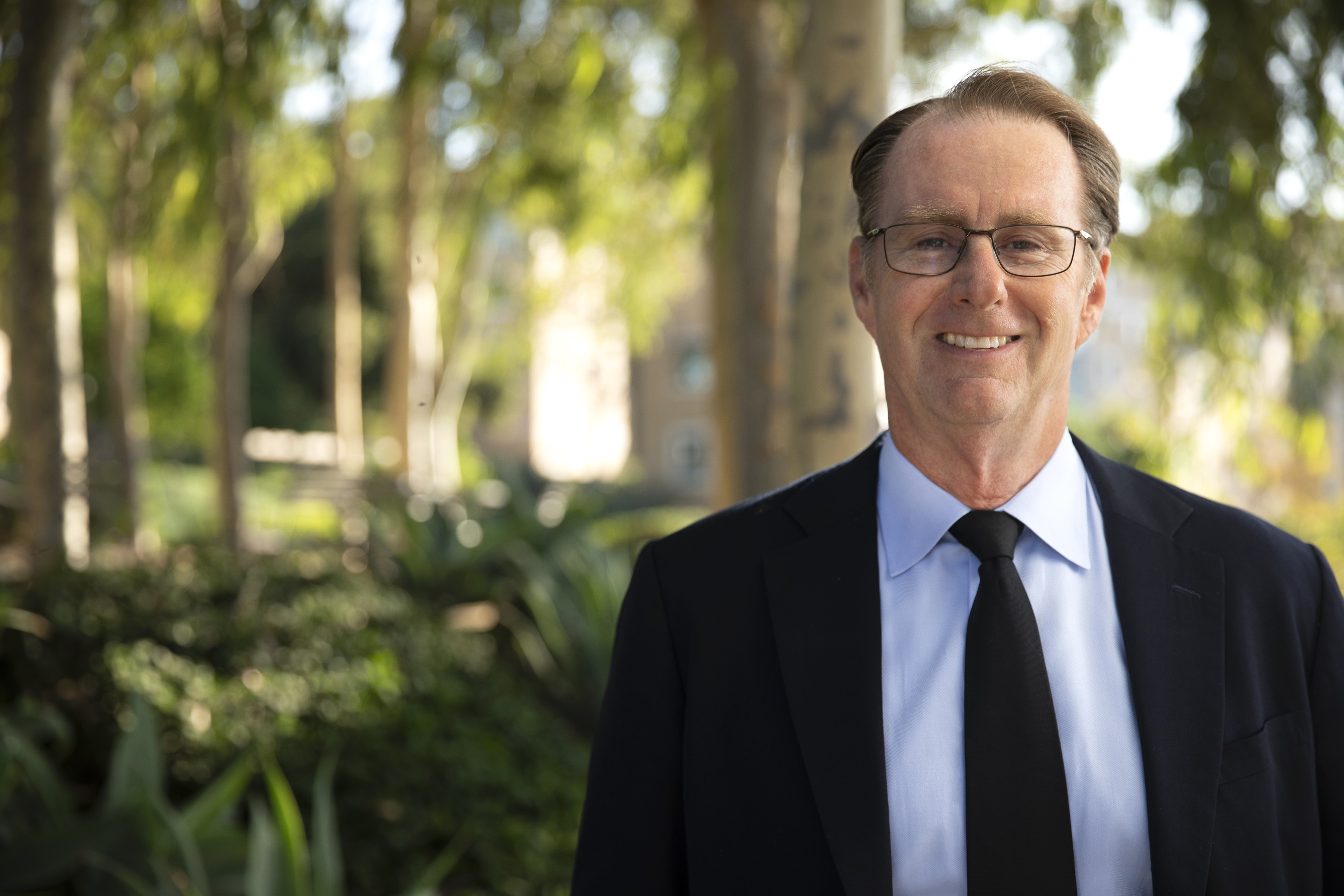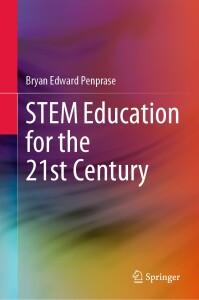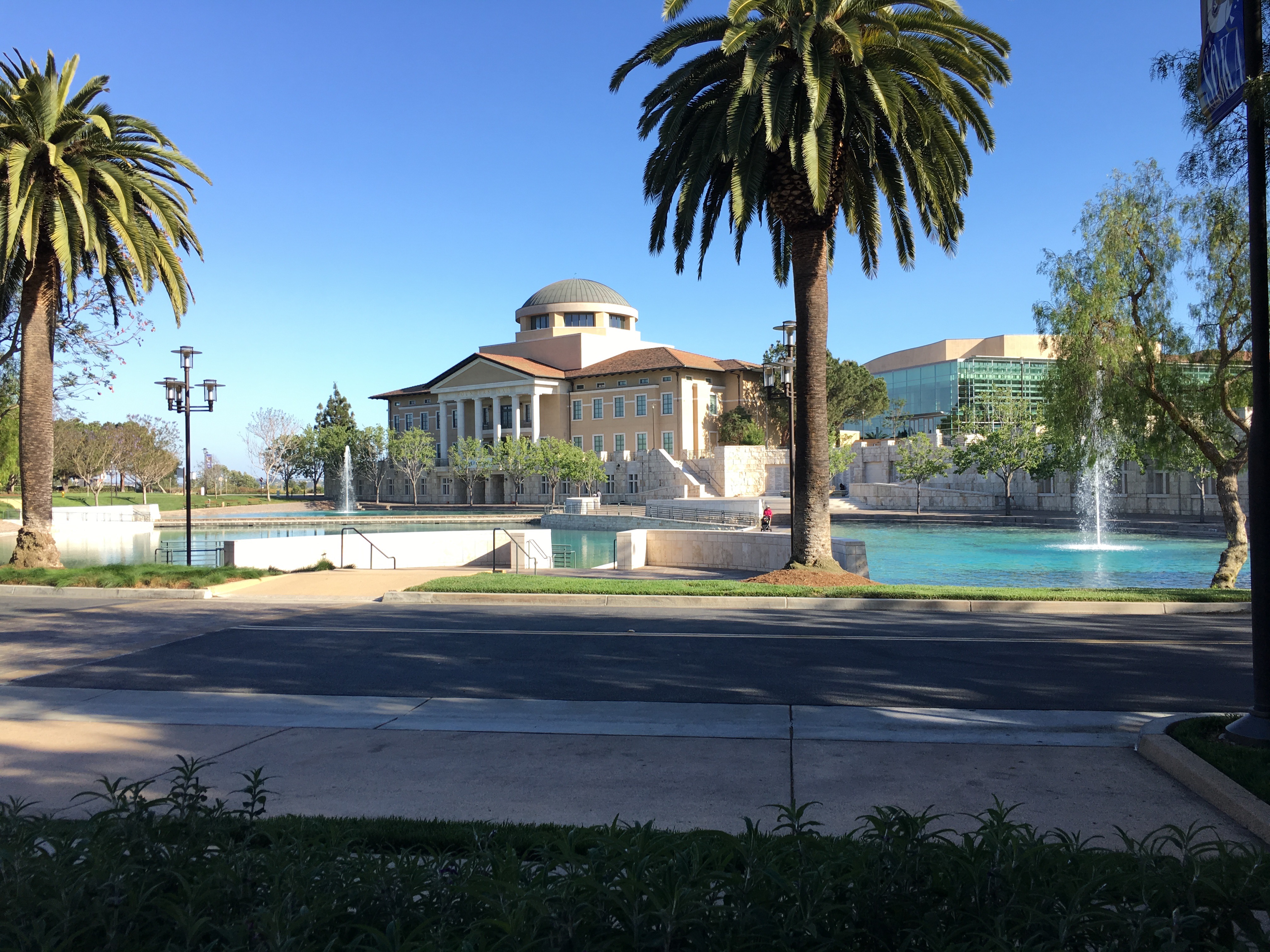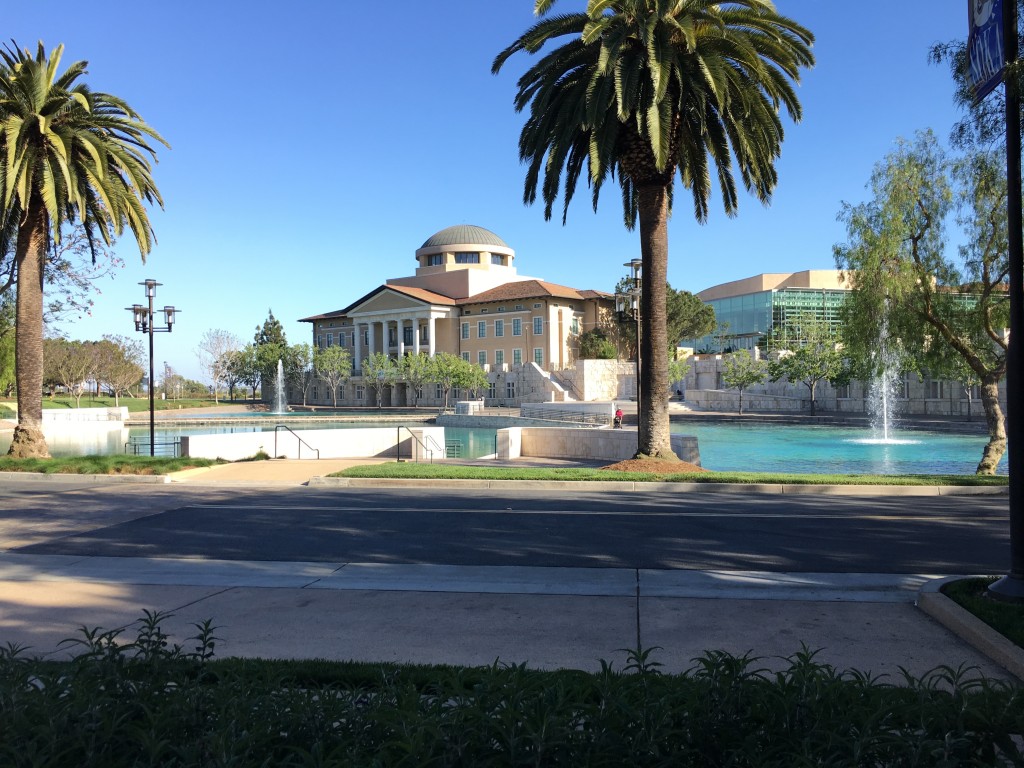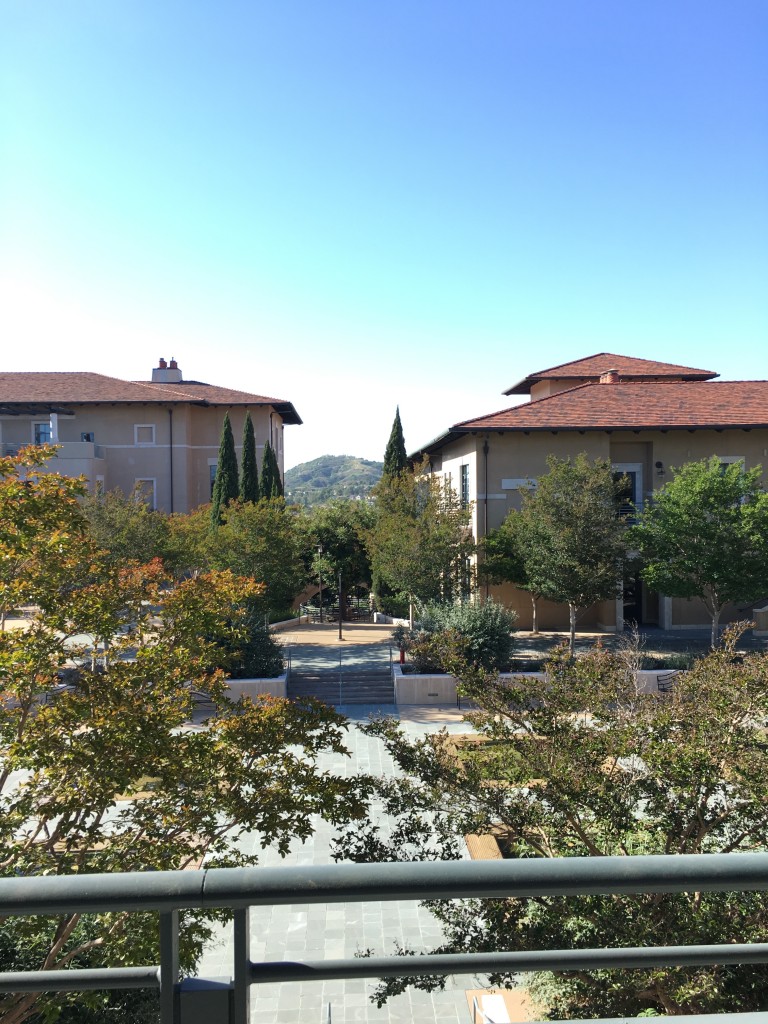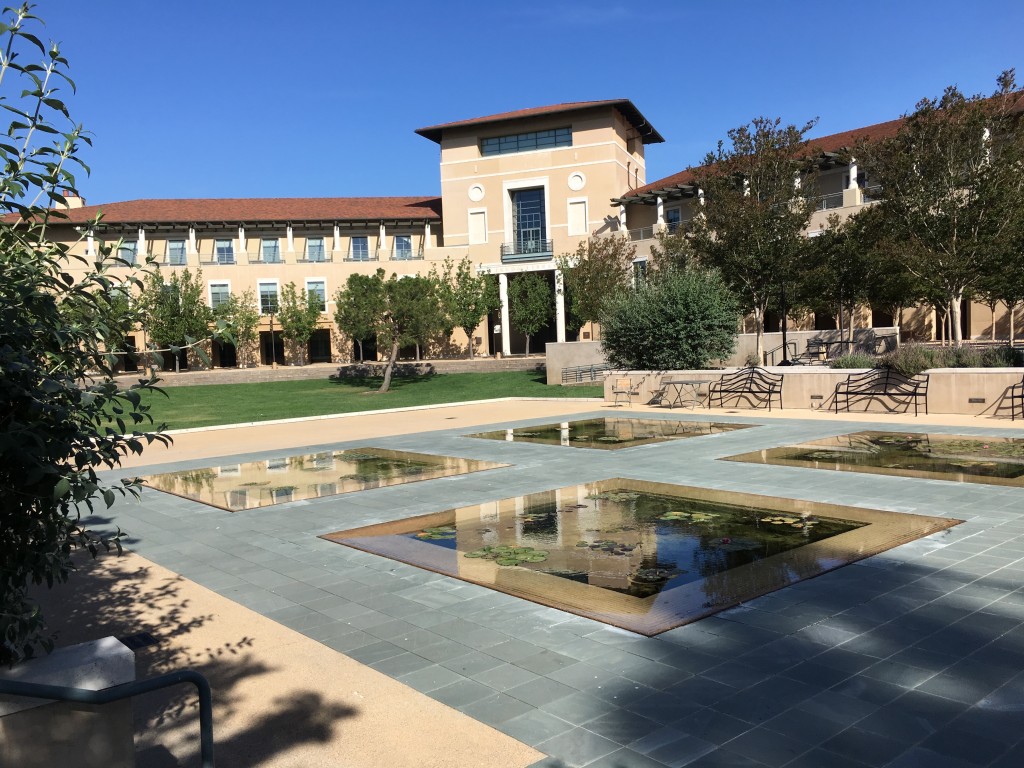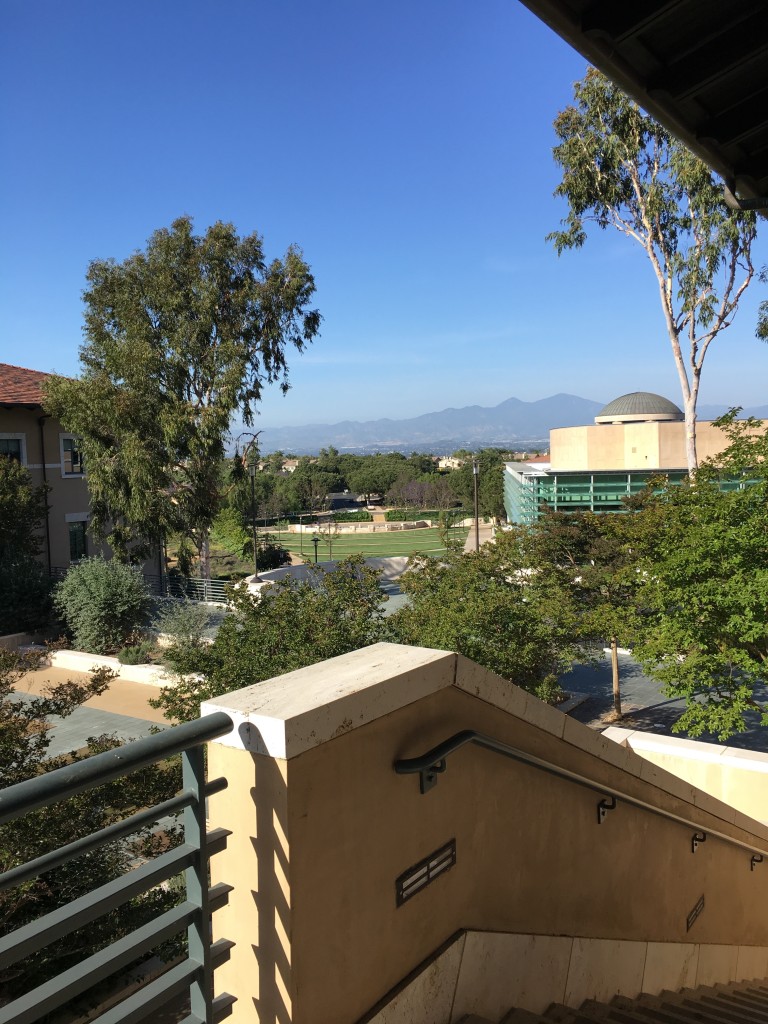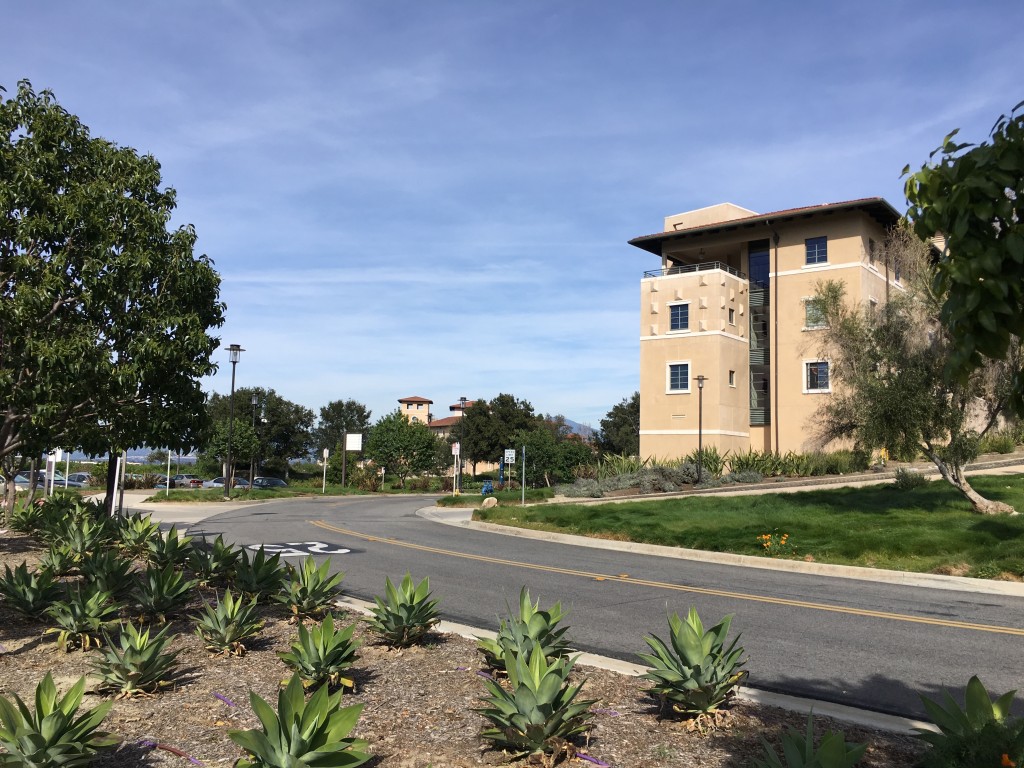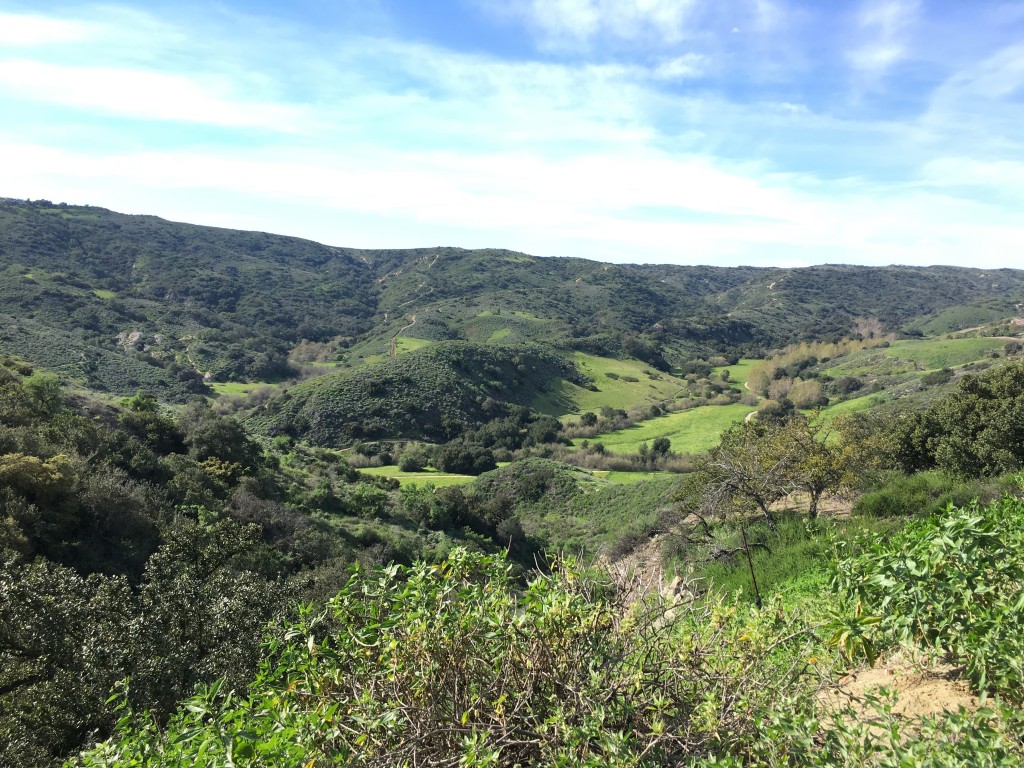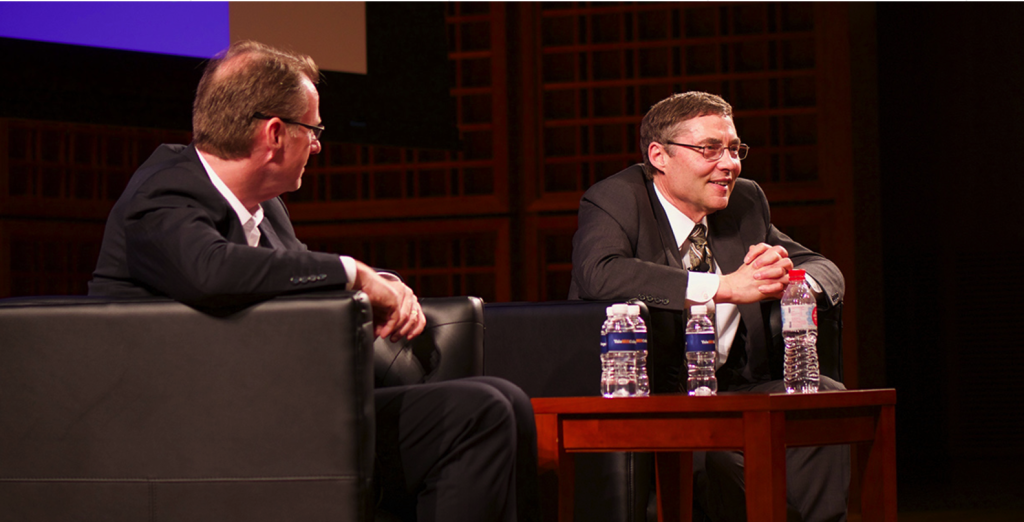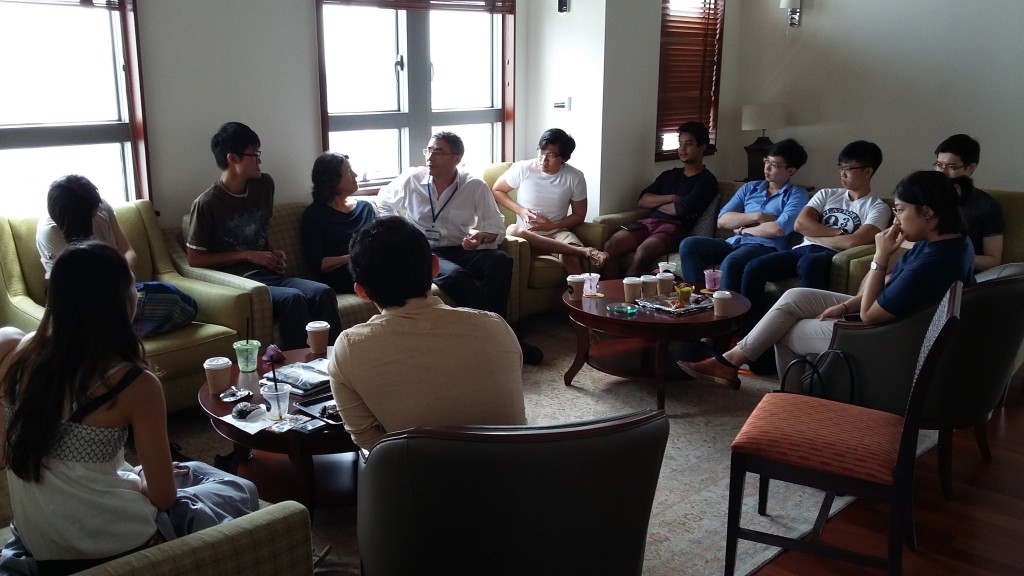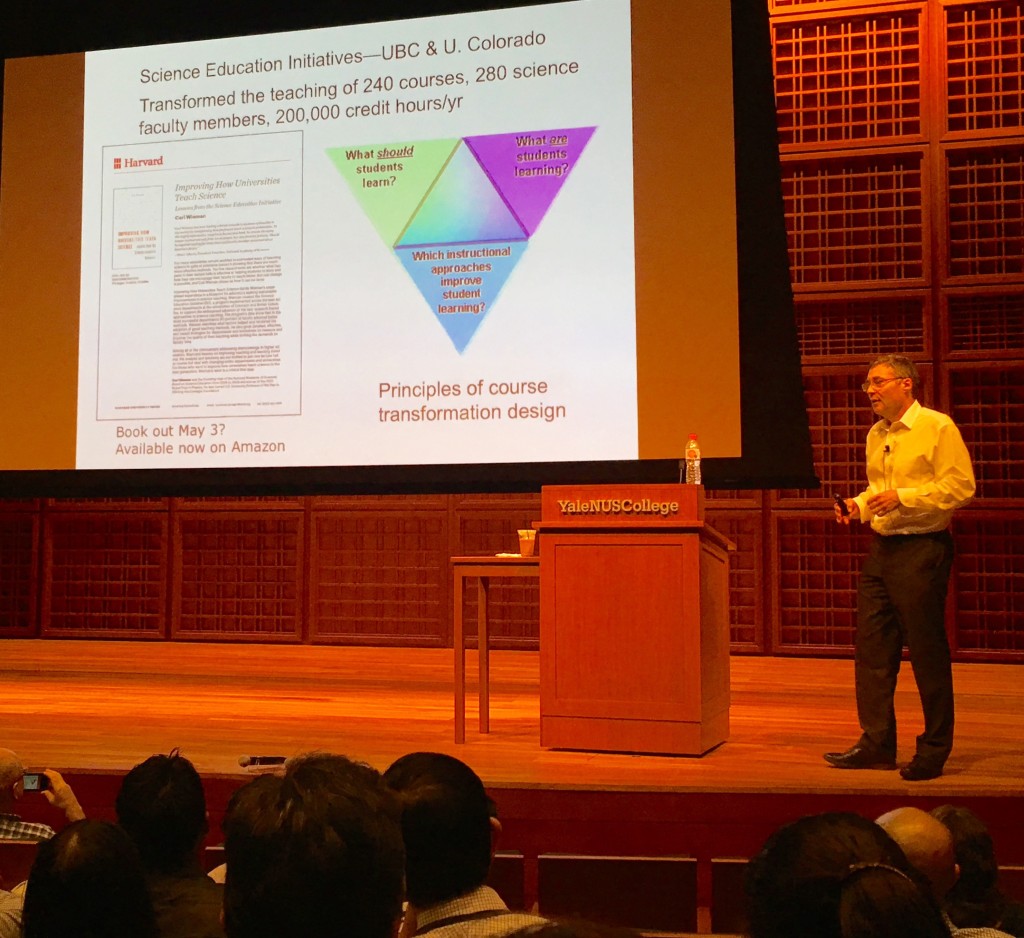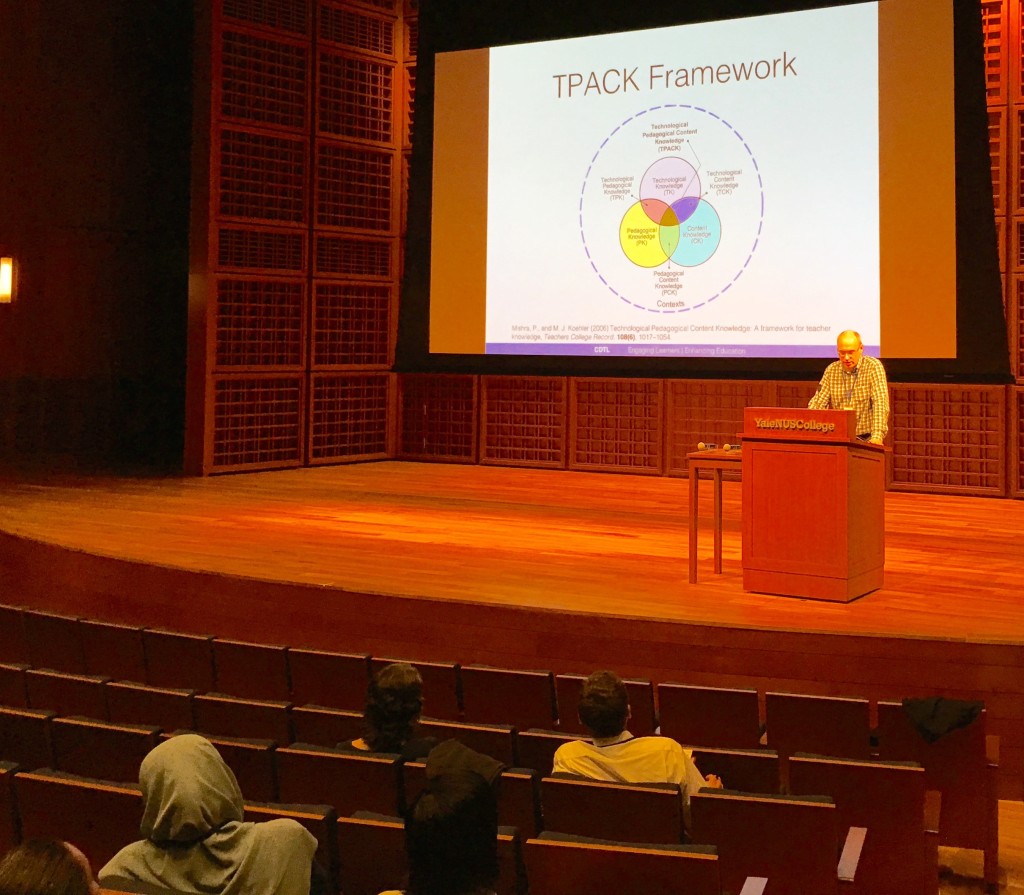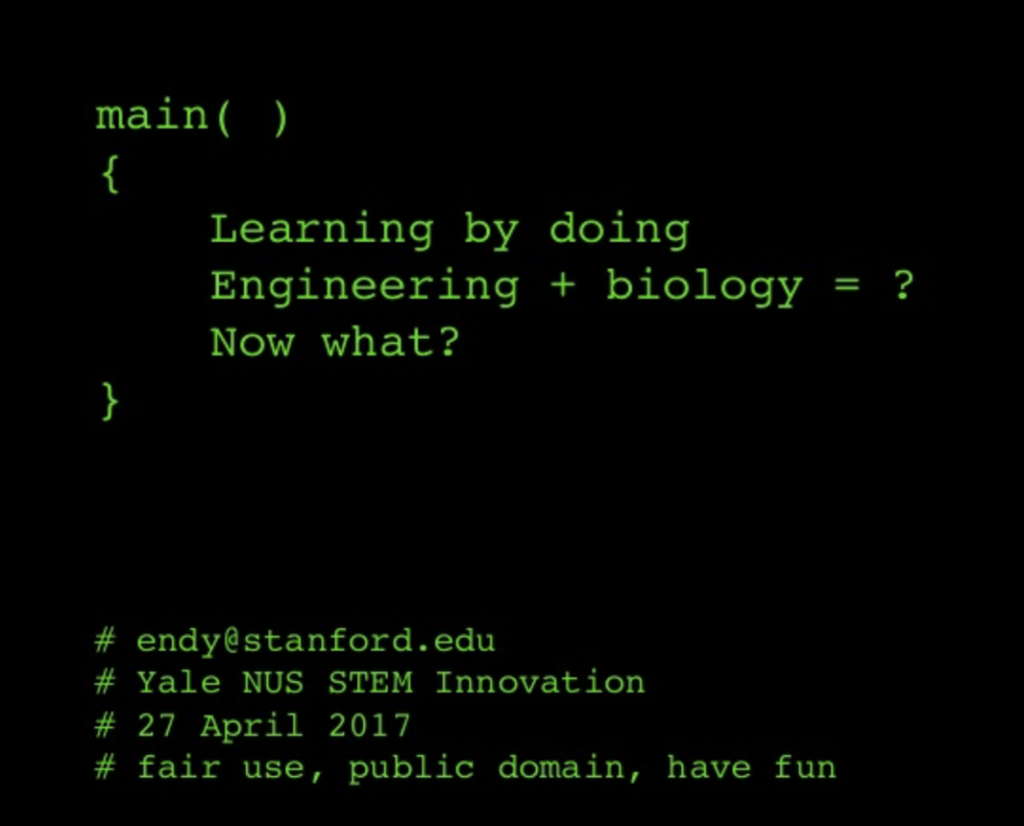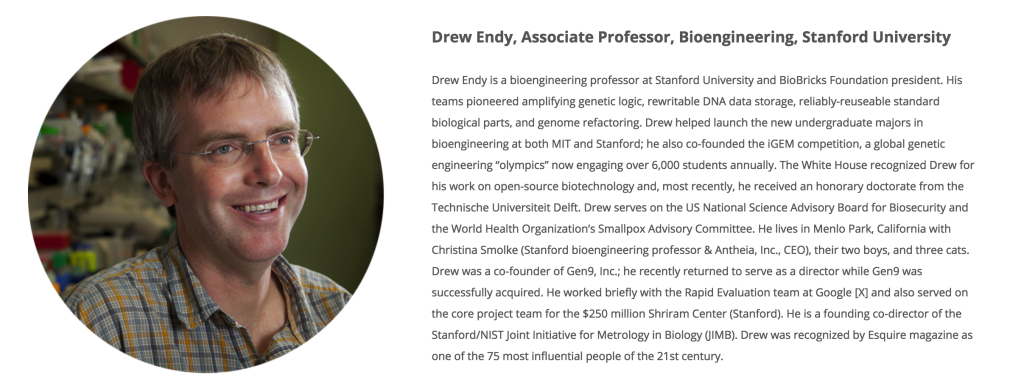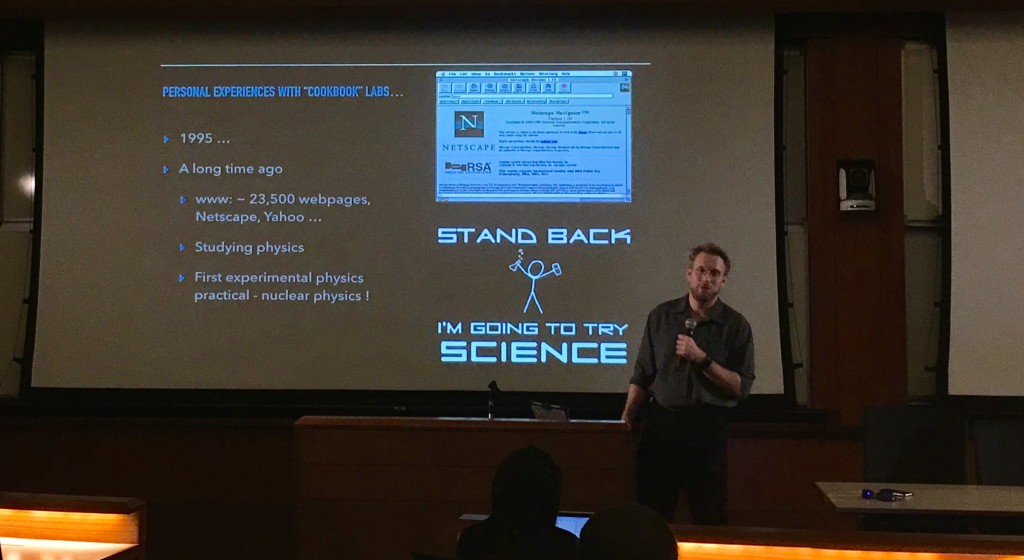After my work in Singapore at Yale-NUS College, which included helping organising the Yale-NUS opening symposium and a conference at Yale University on Global Liberal arts, I was eager to work with Soka University to develop new types of global liberal arts programs that fully engage the diversity of students and faculty and link discussions within the classroom to urgent global issues and that approach academics with an international perspective that multi-faceted, and that departs from US and colonial perspectives so prevalent in US higher education. Thankfully Soka University has as its central mission to foster global citizenship within its graduates to help them live a contributive life – and so a global liberal arts conference was one of the first big projects during my term as Dean of Faculty.
Our conference at Soka University was arranged in 2018 and was co-organized by leaders at Pomona College, Carleton College, Middlebury College, and Yale University. Our organising committee (which included Mary Coffey (Pomona), Jane Edwards (Yale), Scott Carpenter (Carleton), Timi Mayer (Middlebury)) did great work with the conference and brought together leaders from over 50 universities and colleges in 11 countries to our beautiful campus at Soka University. The SUA Global Liberal Arts meeting was on June 3-5, 2018, and our SUA Globalized Liberal Arts website contains more information on the program. I include some of this information below to help give more texture to this post, and to help remind of the many amazing sessions present at the meeting. The list of presenters is also on our conference website, and some of our keynote presentations included Hiram Chodosh, president of CMC, Patti McGill Peterson, Senior Fellow of the American Council on Education, and Adam Weinberg, President of Denison University. A set of panels included discussions on the Core and GE curriculum in Global Liberal Arts, Centers for Global Learning, Study Abroad in a Connected World, the Global Liberal Arts College, Capturing Global Experience, and Globalized STEM education.
This meeting was followed by an amazing retreat of liberal arts leaders at Connecticut College, entitled “Advancing Global Liberal Education Across Institutions,” on January 18-19, 2019, and a subsequent meeting entitled Creating Inclusive Global Communities – Global Engagement in the Liberal Arts” at Dickinson College on October 4-5, 2019. We sent a team from Soka University to this meeting, which included myself, Ian Read, our International Studies Concentration Director, Osamu Ishiyama, our Language and Culture Program Director, and Alex Okuda, our Study Abroad Director. At that meeting our SUA team convened a session and presented how our programs at Soka University all link together and discussed with the participants how to improve connections between these programs. I include the Powerpoint File for that talk for anyone who is interested. The organizing committee for that conference is below:
After these meetings we came up with the acronym for our group which we entitled the Global Education in the Liberal Arts – or GELA, and an “executive committee” met to plan some additional collaborative projects, and a next meeting in fall of 2020 at Wesleyan University. This group includes a really exciting mix of leaders from the best global liberal arts programs in the country and I am excited to be able to be part of the group and look forward to our future collaborations.
Unfortunately in March of 2020 COVID hit and this delayed our 2020 meeting and interrupted our plans – but I am sure we will reconvene and I look forward to working more with this group, and perhaps even hosting another Global Liberal Arts event at Soka University – maybe in 2021!
SUNDAY, JUNE 3 – CONFERENCE OPENING
4:30 – 5:30 PM – Evening welcoming reception – Founders Hall, Soka University of America
5:45 PM – Buffet Dinner – Soka University Art Gallery, Founders Hall
6:45 PM Plenary Keynote talk I, Hiram Chodosh, President, Claremont McKenna College, The Future of Learning
7:15 PM -7:45 Roundtable Discussion on Globalization and Liberal Arts Education
MONDAY, JUNE 4 – DAY 1 OF CONFERENCE
8:00 AM – Registration and Coffee – Performing Arts Center, Soka University
8:30 AM – Welcome and Introduction to Soka University and Overview of the Globalizing the Liberal Arts Conference – Performing Arts Center Main Hall
8:45 AM – Plenary Keynote II, Patti McGill Peterson, Senior Fellow, American Council on Education – Venue: Performing Arts Center Main Hall
Title: “Globally Engaged Institutions: Lists of Initiatives or Institutional DNA”
Description: The global engagement of higher education has a long and multifaceted history. Ultimately, each college or university decides whether and to what extent a commitment to being a globally oriented institution will be part of its mission. If an explicit commitment is articulated, the next steps are determining its architecture and building blocks. This process is often referred to as comprehensive internationalization and conveys a wide range of activity as institutions attempt to define themselves in global terms. In her presentation, Dr. Peterson will provide a broad overview of the internationalization of higher education in the United States and offer an assessment of current efforts to make global learning the centerpiece. She will conclude with observations about the relationship of this work to an America First agenda.
9:30 AM – PLENARY PANEL 1: “THE ROLE OF THE CORE AND GE CURRICULUM IN GLOBAL LIBERAL ARTS”
PERFORMING ARTS CENTER MAIN HALL
SESSION CHAIR:
Bryan Penprase, Dean of Faculty, Soka University of America
PRESENTERS:
Bryan Penprase, Dean of Faculty, Soka University of America, The Soka University Curriculum.
This talk will provide an overview of the Soka University curriculum, which includes a hybrid block-semester calendar, experiential learning courses known as “Learning Clusters” and a Core and GE curriculum that fosters a sense of global citizenship within students and which includes study abroad in a foreign language and language proficiency for all students.
David Helfand, Professor of Astronomy, and Chair of the Committee on Innovative Teaching and Learning Columbia University, Essential Ingredients of a Liberal Arts Curriculum.
A common experience, a broadening experience but, most importantly, an experience that requires self-reflection and deep learning, a general education core is an essential component of any curriculum that claims the moniker “liberal” — it is the piece of the curriculum that prepares students to be truly free citizens of the world.
Terry Nardin, Professor of Political Science and Director of the Common Curriculum at Yale-NUS Yale-NUS College (Singapore), The Common Curriculum at Yale-NUS College.
The Common Curriculum at Yale-NUS provides an alternative approach to general education that is global in intent and execution. Since all students have the same Common Curriculum experience, it also strengthens their ability to learn from one another.
Noah Pickus, Dean, Undergraduate Curriculum Affairs and Faculty Development Duke Kunshan University (China), The Duke-Kunshan University Curriculum.
This talk describes alternative approaches to general education and the unique features of Duke Kunshan University’s curriculum, with special attention to its shared, integrated, immersive, flexible, and signature dimensions.
10:30 – 11:00 AM – Coffee Break – Lobby of Performing Arts Center
11:00 AM – PLENARY PANEL 2: “CENTERS FOR GLOBAL LEARNING: VARIATIONS IN STRUCTURE AND OPERATIONS”
SESSION CHAIR:
Mary Coffey, Associate Dean, Pomona College, Oldenborg Center for Modern Languages and International Relations
This panel will present various models of Centers for Global Learning/Global Engagement, exploring both new and long-standing centers within the tradition of liberal arts institutions. Centers with a focus on global learning have a surprising range of diversity in both institutional structure and activities. How do these various centers participate in the liberal arts mission of their institutions? What are the challenges of operating and sustaining such ventures? What can we learn about successful and less successful initiatives that would help our own institutions in future planning?
PRESENTERS:
Tamar Mayer, Director of the Rohatyn Center for Global Affairs and the Program in International and Global Studies, Middlebury College, Expanding the Charge: Globalizing the International Center.
Middlebury’s Rohatyn Center for International Affairs was charged with being the epi-center for all co-curricular activities that are international in nature on campus. But while the International privileges the nation-state and its international institutions, many of the social, environmental, even economic and political problems cut across political boundaries and present themselves at local and global scales. In response, the Rohatyn Center has changed its name and charge to focus on the global. In this presentation, I will discuss what this shift has entailed and draw on lessons learned.
Kate Patch, Senior Director of Global Initiatives, Grinnell College, Institute for Global Engagement, Internationalizing the Liberal Arts Campus, Now What?
Comprehensive internationalization is not an end-game scenario. Once a campus commits to the process and the structure is built, the “real work” begins. Within liberal arts colleges, unique challenges arise in the pursuit to align strategic global goals across campus. This presentation will highlight Grinnell College’s creation of the Institute for Global Engagement and the future path forward.
Richard Detweiler, President, Global Liberal Arts Alliance (GLAA), Developing Global Education Networks
There are basically two approaches to the development of global educational networks: transactional or relational. A transactional approach, which emphasizes contract-like negotiation for specific purposes, is most typical. A relational approach, which emphasizes the building of meaningful partnerships among equals through time invested in developing and maintaining a shared vision, goals, and outcomes, begins more slowly but results in richer and long-lasting collaboration. The development of the relationship-based Global Liberal Arts Alliance by the GLCA will be described.
Anne Dwyer, Associate Professor and Director, Oldenborg Center for Modern Languages and International Relations, Rebuilding “The Borg”: Reimagining a Residential Center as a Global Hub
Pomona College’s Oldenborg Center for Modern Languages and International Relations, founded in 1966, originally combined a coeducational language residence with “groups organized to study international relations,” and over time developed a mix of residential and curricular programming, including language tables and a lecture series with high community participation. Now the college is planning to rebuild it as a globally-focused center. But what do these ongoing changes mean in terms of new institutional structures and physical spaces? How do we embrace the new without diluting the language-learning mission of today’s “Borg”? How might the balance of residential and curricular programming shift? How might the center make more space for the campus’s diverse language communities? In short, how might a reinvigorated global center channel the disparate and divergent global activities of our students and faculty and become an even stronger intellectual and social hub for the college and its surrounding community?
12:00 PM – PLENARY PANEL 3: “STUDY ABROAD IN A CONNECTED WORLD”
SESSION CHAIR:
Jane Edwards, Dean of International and Professional Experience, Yale University, Setting the Stage for Moving the Furniture.
We will begin with a rapid review of what we have learned about effective practice in the design of study abroad programs, and in providing guidance for students so that they can learn and grow through the experience. This will help us think together about how we can best respond to the extraordinary technological and social changes that have so changed the daily reality of study abroad, and that challenge the validity of models developed decades ago. We will look at recent research and practical guidance in the field, and think about how to develop a plan for reviewing and recalibrating our own program design and our work with our students.”
PRESENTERS:
Antonio Gonzalez, Professor of Spanish and Director of the Fries Center for Global Studies, Wesleyan University, Replicating Intercultural Learning in the High-Tech Classroom: Unforeseen Challenges.
The new high-tech videoconferencing systems that allow colleagues from different areas of the world to co-teach across cultural boundaries and time zones pose new opportunities and challenges to faculty committed to intercultural learning. Advances in technology enable us to achieve a certain authenticity of experience by replicating the type of academic exchange that was previously accessible only by studying abroad. However, as we move to incorporate these platforms in our teaching, we will need to carefully assess how to truly prepare our students attitudinally to engage effectively with the world beyond their borders from within the comfort zone of their domestic campus environment.
Vanita Shastri, Dean of Global Education & Strategic Programs, Ashoka University (India), Development and Challenges of Student Mobility for Indian Institutions.
Student mobility of both outbound and inbound present challenges and opportunities for a new university. Sharing some aspects of the journey and milestones that Ashoka has been able to reach in this regard, issues of interest and importance include financing, aid and student exchange as specific areas of challenge for institutions beyond the United States.
Talya Zemach-Bersin, Postdoctoral Fellow, Pembroke Center for Teaching and Research on Women, Brown University and an instructor in Yale’s Education Studies Program, The Cultural Politics of Study Abroad.
While many forms of border crossing have been embraced by academics as important fields of inquiry, the matter of American students studying and volunteering abroad has been largely quarantined in the professional domain of international education. What would happen to our assessment of study abroad if we examined it through the disciplinary lenses of history, foreign relations, or anthropology? When taken as a legitimate object of study, student mobility emerges not as an inevitable educational good, but as an enterprise deeply embedded in the politics of America’s relationship to the world. This presentation will identify some of the major ethical questions and pedagogical concerns that emerge from a critical analysis of student interviews and study abroad advertisements.
1:00 PM – Lunch – Performing Arts Hall Patio
2:30 PM – Overview of Parallel Sessions – Venue: Pauling Hall 216
Parallel Working Group Discussions I – Break-out rooms. Each working group session will discuss a theme from the morning presentations in greater depth, sharing insights from the many institutions represented at the meeting, and working together to find solutions to common problems within each theme. These discussions will be summarized and reported back at the plenary 4:30PM session.
| Theme 1 |
Theme 2 |
Theme 3 |
| The Role of the Core and GE Curriculum in Global Liberal ArtsPauling Hall 216 |
Centers for Global Learning: Variations in Structure and OperationsMaathai Hall 207 |
Study Abroad in a Connected WorldMaathai Hall 303 |
4:15 PM – Coffee Break -Performing Arts Center Lobby
4:45 PM – Reports from the Working Groups – Venue: Pauling Hall 216
6:00 PM – Overview of Conference and Upcoming Working groups
6:30 PM – Buffet Dinner – Performing Arts Center Lobby
TUESDAY, JUNE 5 – DAY 2 OF CONFERENCE
8:00 AM – Coffee and Refreshments – Performing Arts Center, Soka University
8:30 AM – Introduction to Second Day of Conference – Venue: Performing Arts Center, Soka University
8:45 AM – Plenary Keynote III, Adam Weinberg, President, Denison University, Venue: Performing Arts Center Main Hall
Title: “Creating a Globally Engaged Campus”
Description: What does it mean to be a globally engaged campus? In this talk, Dr. Weinberg will lay out a series of principles to imagine a globally oriented liberal arts that educates and inspires a generation of students, faculty, staff, alumni, and local community members with the capacity to work on complex problems that span diverse cultural perspectives. Doing so requires thinking more deeply and broadly about who we need to engage on our campuses and how we want to engage them. It also requires more serious and sustained efforts to connect disparate initiatives that already are taking place on our campuses. Dr. Weinberg will lay out a series of principles and early action steps to move campuses in this direction.
9:30 AM – PLENARY PANEL 4: “THE GLOBAL LIBERAL ARTS COLLEGE”
PERFORMING ARTS CENTER MAIN HALL
SESSION CHAIR:
Tamar Mayer, Director of the Rohatyn Center for Global Affairs and of the Program in International and Global Studies, Middlebury College
In recent years, many liberal arts colleges have begun to promote themselves as incubators of “global citizenship.” In spite of these claims, however, it is unclear what precisely defines a college as global. The purpose of this roundtable discussion is to work toward a definition of the “global” in the liberal arts by looking at different versions of global programs from leading liberal arts colleges.
.
Presenters:
Jeremy Adelman, Henry Charles Lea Professor of History and Director of the Global History Lab Princeton University, Can We Bring the World into a Course?
While I have done a lot of different programming and planning over the years, perhaps I should focus on my own experience in recent years with humanitarian humanities, integrating refugee learners and Princeton students into the same course without walls. I will talk about the ups and downs of global blended learning, the challenges of helping students to collaborate across distances and socio-economic backgrounds and legal conditions. How can a course bring the world to campus and give campus students access to voices from the rest of the world? How can undergraduate learning be a service to humanity?”
Rosetta Marantz Cohen, Professor of Education and Child Study, Smith College, The Making of a School: Global Education in the Making
Regardless of geography, making schools requires close attention to historical, political, environmental, ethical, and practical considerations. This is even more crucial when the designers and educational experts operate from different parts of the globe. In order to afford our students the opportunity for a true global collaboration, the Department of Education and Child Study at Smith College offered this past semester a course entitled The Making of a School, in which students worked with Kenyan educators and experts on the ground to design a new boarding school for girls in Kenya. I’ll discuss the class, and the possibilities, complexities, and limitations inherent in an effort like this one.
Nadia Rabesahala Horning, Director of Social Entrepreneurship Programs, Middlebury College, Increasing the Flow of Ideas and People between a College and a Continent: the Middlebury-ALU Experiment.
What does it take to “globalize” a liberal arts college in New England? In this presentation, I will discuss the approach I have taken to this challenge since 2015. The approach consists of re-imagining my educator’s role as a facilitator of engagement across cultural and institutional boundaries. This conceptualization of the educator’s role is a departure from the conventional teacher-scholar one, and it has presented both challenges and opportunities. To unpack these, I will share insights from a recent trip I took with Middlebury College students to the African Leadership University (ALU) in Mauritius.”
Trisha Craig, Dean of International and Professional Experience Yale-NUS College (Singapore), In Asia, For the World: Establishing the Liberal Arts Abroad
What does it mean to introduce the liberal arts to parts of the world where it is a relatively unknown model of education? Starting from the experience of Yale-NUS in Singapore, I’ll talk first about the development of our curriculum,which is designed to answer the question ‘what does a young person need to know in the 20th century?’ and is built on a foundation of a robust common curriculum that has the East and West in dialogue. Then, the broader issue of why at a time when the liberal arts is losing its luster in the West, it is being championed by States elsewhere in the world will be considered. Finally, some of the implications for institutions operating in these new settings are discussed.
Kara Godwin, Higher Education Consultant and Research Fellow, Center for the International Higher Education, Boston College. Liberal Education’s Global Trends and Critical Questions: Where to go from here?
I come to this panel from a slightly different perspective in that I am a researcher who studies international higher education, and specifically, the global emergence of liberal arts education outside the U.S. Because I also do a lot of consulting related to liberal arts in the US and abroad, strategic initiatives, and higher ed learning/teaching/curriculum/assessment, I see angles from multiple institutions. My presentation objective will be to broaden perspectives. I would like to do this in two ways: provide an evidence-based summary of what is happening with liberal arts globally, and raise some tough questions about what it means that liberal ed is expanding. My goal is to get people thinking beyond their own institutions and see their institutions/programs within a broader global landscape.”
10:30 – 11:00 AM – Coffee Break
11:00 AM – PLENARY PANEL 5: “CAPTURING THE GLOBAL EXPERIENCE”
SESSION CHAIR:
Scott Carpenter, Marjorie Crabb Garbisch Professor of French and the Liberal Arts, Director of the Center for Global and Regional Studies, Carleton College , Global Pathways
PRESENTERS:
Eva Posfay, Professor of French, former Associate Dean, Carleton College Who Am I? Promoting Intercultural Reflection in the Classroom
How can our curricula help students think deeply about their intercultural experiences abroad? This presentation will discuss a variety of theoretical, analytical, and experiential strategies used in cross-cultural studies courses at Carleton.
Arne Koch, Dean of Global Engagement, Associate Professor of German, Colby College, Integrating Off-Campus Study: Colby College’s Faculty Mentoring (Pilot) Program
How can we promote integration of study abroad into the fabric of our academic institutions to promote faculty exposure to students’ study-abroad experience and at the same time enhance departmental oversight of students’ off campus experiences, requiring them to articulate their academic and personal goals? Working from this question posited by Colby College’s Global Task Force in May 2016, Colby set out to create as a pilot the OCS Faculty Mentor Program this past spring. Aside from a program description, this presentation will discuss already identified challenges and ways in which an institutional commitment to integrating students’ study abroad experiences may be applicable at different institutions.
Eric Feldman, Program Manager, Office of Global Learning Initiative, Florida International University, Prompting Reflection with ePortfolios in a Global Distinction Program
ePortfolios can be utilized to capture student reflection while storing and displaying artifacts of global learning experiences. This session will share transferrable suggestions for practice regarding how to design ePortfolio instructions which excite students and allow them to show their creative side while containing standardized elements across participants.
Elaine Meyer-Lee, Associate Vice President for Global Learning and Leadership, Agnes Scott College, Building on Global Immersion Experiences in the Curriculum and Co-Curriculum
Many campuses have now incorporated global immersion experiences of some kind into their curriculum, and this talk will offer some principles and examples for both embedding these more deeply within reflection courses and following them up with later connected manifestations of global learning, including courses and co-curricular experiences leading toward a Global Learning Specialization noted on the transcript. Ways in which a team-based advising approach and a digital portfolio can both assist students in articulating and curating this learning will be provided, as well as preliminary assessment findings from a multi-method longitudinal assessment.
12:00 PM – PLENARY PANEL 6: “GLOBALIZED STEM EDUCATION”
SESSION CHAIR:
Bryan Penprase, Dean of Faculty, Soka University of America
PRESENTERS:
David Drew, Professor of Education and Joseph B. Platt Chair in the Management of Technology, Claremont Graduate University, Liberal Arts and Engineering.
David E. Drew will discuss an NSF-funded feasibility study he and Louis Bucciarelli (MIT) have been conducting about innovative ways to more tightly integrate engineering education with the arts and humanities. He also will discuss a) barriers to STEM education facing women and students of color, both in the US and in other countries, and b) strategies and programs to overcome those barriers and increase access to, and diversity in, STEM.
Kathy Takayama, Senior Science Education Fellow at the Howard Hughes Medical Institute (HHMI), Inclusive STEM Education.
I will share the processes of a collaborative approach toward inclusive STEM education through the integration of theatre and STEM pedagogy. We facilitate an embodied understanding of diversity, identity, and the power of embracing failure, to promote openness to possibility and stimulate idea generation. By “deconstructing” the signature pedagogies of STEM, we explore stereotype threat, microaggressions, and help reconstruct cultures of inclusion and generosity to foster self-authorship for learners and bring their identities into the global narrative of STEM.
Katie Purvis-Roberts, Professor of Chemistry and Environmental Science; W.M. Keck Science Department of Claremont McKenna, Pitzer and Scripps Colleges, International Environmental Chemistry.
How can we encourage science students to be involved in international collaborations? A case study of student collaboration in an Environmental Chemistry course at the Claremont Colleges focused on environmental issues in Asia will be discussed. As part of the course, the students grapple with real-world environmental problems by working on projects with students from the National University of Malaysia around renewable energy, climate change, and air quality. Eventually a network of engineering and science faculty within Asia Pacific Economic Cooperation (APEC) economies will be developed to utilize student work on real-world projects to inform policy for the APEC Energy Working Group.
Juan Manuel Fernández-Cárdenas , Professor of Education and Director of the Master in Educational Technology, Tecnológico de Monterrey, Mexico, Understanding the teaching of STEM education through dialogue and transformative learning in Mexico.
STEM education operates in the contemporary context of globalization and is influenced by a complex interplay of local and global (or ‘glocal’) forces. Globalization itself is held up by some as a panacea for inequality but is simultaneously shown to be propagating as many inequalities as it is solving. STEM education is similarly contradictory, being seen as a universal driving force for international development, but also accentuating social and cultural inequalities. In this presentation, the aim is to explore perspectives on STEM education focusing on dialogue and transformative learning, addressing the following guiding questions: a) How can we overcome the seemingly contradictory agenda of STEM education in order to simultaneously create economic development and meet the social needs of participants? and b) What sorts of innovations and new approaches are being introduced with regards to the teaching of STEM in Mexico?
1:00 PM – Lunch – Performing Arts Center Lobby & Patio
2:30 PM – Overview of Parallel Sessions – Venue: Pauling Hall 216
Parallel Working Group Discussions II – Break-out rooms. As during the first day of the conference, each working group session will discuss a theme from the morning presentations in greater depth, sharing insights from the many institutions represented at the meeting, and working together to find solutions to common problems within each theme. These discussions will be summarized and reported back at the plenary 4:30PM session.
| Theme 4 |
Theme 5 |
Theme 6 |
| The Global Liberal Arts CollegeMaathai Hall 207 |
Capturing the Global ExperiencePauling Hall 216 |
Globalized STEM EducationMaathai Hall 303 |
4:15 PM – Coffee Break – Performing Arts Center
4:45 PM – Reports from the Working Groups – Venue: Pauling Hall 216
5:30 PM – Roundtable Discussion: “What is a Global College?” – Venue: Pauling Hall 216
6:00 PM – Reception : Performing Arts Center Lobby
6:30 PM – Closing Buffet Dinner – Venue: Performing Arts Center Lobby
7:30 PM – Meeting Adjourns

